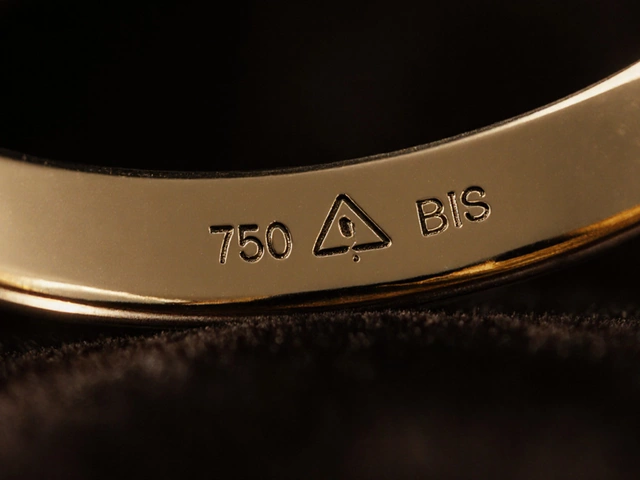If you’re serious about making jewelry kits—whether as a side hobby or a step toward your own business—finding a solid supplier isn’t just helpful; it’s a game-changer. Picking the right one can decide how your kit turns out, how much money you make, and how smoothly your entire project goes. It’s not just about cheap prices—trust, quality, and consistency matter a lot too.
You might think the easiest way is just searching “jewelry suppliers” on Google, but there’s a lot more to it. Loads of flashy websites and big promises out there can look tempting, but they don’t all walk the talk. Some suppliers will happily leave you with bent wires, missing clasps, or parts that look nothing like the photo. To skip the mess, you want practical steps and clear red flags—stuff you don’t figure out until you’ve been burned once or twice.
The hunt isn’t as simple as grabbing the first big name. Sometimes, hidden gems pop up at trade shows, in specialized Facebook groups, or even Etsy—yeah, some sellers there do wholesale! Online marketplaces like Alibaba open up options, but you need to be sharp about quality and minimum orders. The trick is knowing which option fits your needs, your budget, and the kind of jewelry kits you want to make.
- Why a Good Supplier Matters
- Where to Search for Jewelry Suppliers
- How to Judge Supplier Reliability
- Negotiating Prices and Terms
- Avoiding Scams and Common Mistakes
Why a Good Supplier Matters
Picking the right jewelry supplier isn’t just about who offers the lowest prices. If you land a supplier that delivers uneven beads or tarnished metal pieces, your whole jewelry making kit can fall apart. That’s not just bad for your project—it wrecks your customer’s experience and bites into your revenue. No one wants to spend hours assembling kits only to deal with returns and complaints later. That’s why getting this decision right from the start saves time, money, and stress.
Let’s face it, consistency is king. The best jewelry suppliers send the same quality every time, don’t swap out materials, and actually ship what they promised. If you change suppliers mid-way, the new batch could look totally different, which messes up your inventory and pricing. Good suppliers are key to building trust with your buyers, and people seriously remember which kits hold up and which fall apart.
Here’s what happens when you pick a good one:
- Your jewelry making kits have better reviews because the pieces fit and last.
- You save money: less wasted material means fewer replacements or refunds.
- You get more time to create new designs—no babysitting late shipments or fighting over broken parts.
On the flip side, working with unreliable suppliers often leads to long shipping delays, missing items, and even knockoff parts. According to one supplier watchdog group, nearly 22% of complaints in craft supply buying come from inconsistent shipments and surprise price hikes. Here’s a look at what reliable vs unreliable gets you:
| Reliable Supplier | Unreliable Supplier |
|---|---|
| On-time Every Month | Shipments Arrive Late or Partial |
| Consistent Quality of Parts | Pieces don’t match or break easily |
| Clear, Honest Pricing | Hidden Fees & Price Changes |
| Helps with Custom Requests | Ignores or delays questions |
If you plan to turn your kits into a steady gig, the right supplier is your partner, not just a vendor. This is why it’s worth digging deep and not rushing this first step.
Where to Search for Jewelry Suppliers
If you want to build your own jewelry making kits, you need to know where the legit suppliers hang out. Start simple: search engines work, sure, but they’re just step one. There’s a world beyond Google that most people ignore. Here’s where you’ll find serious leads:
- Online Marketplaces: Alibaba and AliExpress are two of the biggest names for bulk buying. These marketplaces make it easy to compare different jewelry suppliers, read reviews, and check product photos. Just watch the minimum order quantities—some want you to buy hundreds of pieces at a time.
- Trade Shows: If you’re near a big city, check out local or international jewelry trade shows, like JCK Las Vegas or the India International Jewellery Show. Meeting suppliers face-to-face cuts out a ton of guesswork. You can touch the products and talk about deals right there.
- Wholesale Platforms: Sites like Wholesale Central and ThomasNet list hundreds of sourcing suppliers focused on jewelry parts and kits. These aren’t flashy, but you’ll find trustworthy businesses that cater to small orders as well as bulk.
- Social Media Groups and Forums: Facebook groups like “Jewelry Makers Marketplace” or Reddit subs like r/jewelrymaking are underrated. Real people share where they get their stuff, so you’ll see honest feedback and warnings.
- Etsy for Wholesale: Some small-scale sellers on Etsy do custom and wholesale deals if you message them. If you want quirky or unique kit parts, indie makers there can be surprisingly flexible.
Double-check the supplier’s background no matter where you find them. A quick search for their name, plus terms like “scam” or “reviews,” often tells you everything you need to know.
If you like numbers, here’s a little comparison of typical minimum order sizes and average lead times for a few major supplier sources:
| Supplier | Min. Order | Typical Lead Time |
|---|---|---|
| Alibaba | 100+ units | 2-6 weeks |
| AliExpress | 1-10 units | 7-21 days |
| Trade Shows | Varies (small to bulk) | Immediate to 2 weeks |
| Etsy (Wholesale) | 10-50 units | 1-4 weeks |
Every option has its quirks. Don’t rule out local bead shops either—they can hook you up with trusted contacts or even good deals if you buy in bulk.

How to Judge Supplier Reliability
Nailing down a jewelry supplier you can trust for your jewelry making kits isn’t about luck—it’s about knowing what to look for. Some suppliers talk a big game, but only a few can match what they promise. Here’s how to tell the difference before you spend a dime.
First up, always check for legit business credentials. Does the supplier have a registered business address you can double-check on Google Maps? If they only offer a random Gmail address and a phone number that never picks up, that’s a red flag. Also, look for business licenses or certifications—many reliable suppliers happily show these on request, especially if they supply to bigger retailers.
Reliable suppliers are also happy to send product samples. If they dodge your request or want an unreasonably high fee for samples, think twice. Quality should match the photos and descriptions, so compare the sample to what’s advertised. Sometimes, that shiny bead online turns out to be cheap plastic when it arrives. Testing a sample gives you real insight.
- Ask for references or reviews. Reach out to past buyers if possible—some suppliers will connect you. Real feedback about consistency, shipping speed, and after-sales support means more than a dozen fancy website banners.
- Transparency over pricing and product specs is key. If a supplier can’t explain grades of metals or where stones come from, their materials are probably not up to scratch.
- Check their shipping and delivery track record. Delays kill momentum for small jewelry businesses. Global sources like Alibaba often list supplier on-time delivery rates—aim for over 95%.
For extra peace of mind, dig around for industry affiliations. Are they part of a jewelry trade association? That’s not a guarantee, but it raises the bar—memberships like the Responsible Jewellery Council are a good sign.
| Reliability Factor | What to Look For |
|---|---|
| Business Credentials | Registered address, license, public contact info |
| Samples | Willingness to send, quality matches ads |
| Reviews | Direct buyer referrals, public feedback |
| Transparency | Product info, materials, clear pricing |
| Delivery | On-time rate over 95% |
| Affiliations | Trade association membership |
Spotting a reliable jewelry supplier does require a little homework. But catching the duds early is worth it. If they pass these tests, you’re in much safer hands when you order supplies for your next jewelry kit batch.
Negotiating Prices and Terms
So you’ve found a jewelry supplier for your jewelry making kits. Time to talk numbers—and that’s where people get nervous. Don’t stress; suppliers expect you to ask about prices and details. In fact, they probably won’t respect you if you don’t. Here’s how to negotiate without getting pushed around.
Start by knowing the going rate. For example, standard brass findings might average out at $2 per 100 pieces wholesale, but branded or plated ones easily jump to $8–$10. If you quote those numbers, suppliers know you’ve done your homework. Compare a few offers before starting the chat, and don’t forget to factor in shipping and potential customs fees—sometimes they double your cost.
Most suppliers set minimum order quantities, often called MOQs. Small-scale jewelry making kit makers usually get stuck with high MOQs, but it’s not set in stone. If you’re new, ask if they’ll let you place a smaller test order at first. Sometimes agreeing to pay a bit more per unit for that first batch gets you in the door, and you can negotiate better terms after you prove you’re a serious buyer.
What catches beginners off guard? Payment terms. Always ask if they expect full payment upfront or if you can do part now, part on delivery. PayPal and other secure methods protect you; wire transfers to random overseas accounts don’t. If a jewelry supplier insists on the latter, walk away.
Talk about returns and quality guarantees, especially when pieces aren’t as described. Good suppliers will offer something—not everything, but a percentage or a replacement shipment. Get these promises in writing, even if it’s just an email.
A lot of people miss this one: pricing changes. Metal markets bounce around (look up silver prices lately—wild swings every few months). Ask if prices are fixed once you place the order. Some suppliers can lock in your price, while others might sneak in small increases, blaming market shifts.
- Request a detailed price quote—broken down by item, not just a lump sum.
- Clarify MOQs; if too high, ask for a sample order.
- Negotiate on shipping—bulk orders sometimes qualify for free or discounted rates.
- Use email or messaging to get agreements on record, not just phone calls.
If you want real-life numbers, check this recent markup data for wholesale jewelry making supplies:
| Item | Wholesale Price (per 100 pcs) | Suggested Retail |
|---|---|---|
| Basic clasps (brass) | $2.50 | $10–$12 |
| Sterling ear wires | $9.00 | $28–$34 |
| Glass beads (mixed) | $5.00 | $25 |
Numbers change, but it’s clear why negotiating matters. Don’t settle for the very first deal. Be polite, but firm, and remember—suppliers want your business as much as you need their products. Play it smart, and you’ll set up your jewelry making kits with better margins and fewer surprises.

Avoiding Scams and Common Mistakes
Scams are surprisingly common when you’re looking for a jewelry supplier, especially if you’re shopping online or trying out an unfamiliar platform. Some suppliers may ghost you after getting payment, ship out poor-quality pieces, or send nothing at all. Others might advertise “wholesale jewelry” but hide extra fees or mislead you with fake reviews.
To stay safe, get in the habit of running a background check on any new supplier. Here’s what helps:
- Double-check their business name and address. Can you find them in a company registry or business directory?
- Look for verified reviews outside of their own website—places like Trustpilot, Reddit, or craft forums often have honest feedback.
- Ask for samples before placing a big order. Good suppliers expect this and won’t make it hard.
- Use secure payments—PayPal or credit card offers some protection if anything goes wrong. Never send money by wire transfer (like Western Union) to a new seller.
- If the deal sounds too good to be true—like prices 70% lower than everyone else—there’s probably a catch.
Common mistakes can trip up even experienced folks. Let’s talk about those:
- Not checking minimum order quantities. You don’t want to end up stuck with hundreds of clasps or stones you’ll never use for your jewelry making kits.
- Ignoring postage and customs. Overseas shipping often means hidden costs or long waits.
- Forgetting about product standards—nickel-free, hypoallergenic, lead-free—especially if you’re selling or giving these kits to others.
- Skipping clear communication. Misunderstandings happen when you don’t confirm color, size, or material specifics. Get it in writing, even if it’s over email.
Here’s a quick look at common red flags based on reported online cases by small jewelry businesses in 2024:
| Red Flag | What It Means |
|---|---|
| No physical address posted | Hard to track if they disappear after payment |
| Unusually low pricing | Likely fake or off-spec products |
| Push for fast, early payment | Trying to get your money with no intention to ship |
| Few or no reviews anywhere online | Possibly a new or fake business |
The safe move? Start with small trial orders, and build your supplier relationship slowly. Never let FOMO (fear of missing out) push you into risky deals with your jewelry supplier. Trust your gut—when something feels off, it usually is.



